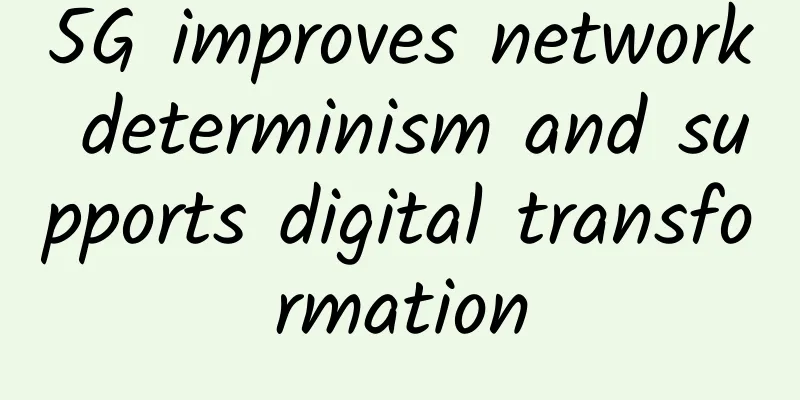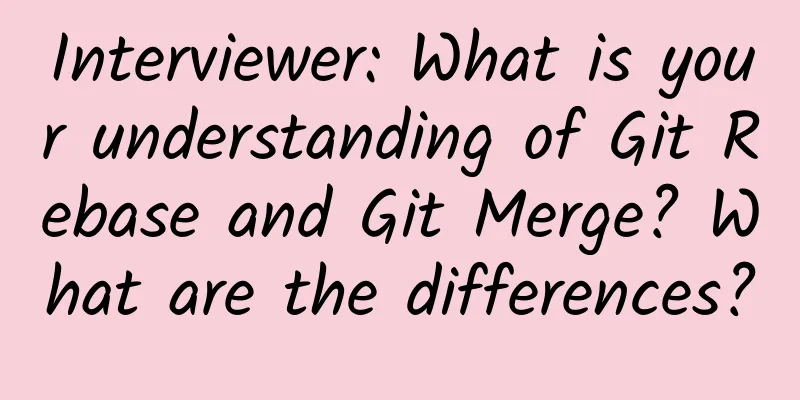Through "confession", let us quickly understand the seven-layer network protocol

|
This chapter mainly introduces the network protocol, which is called the OSI protocol (a series of protocols). It is divided into seven layers according to different functions and divisions of labor. In fact, these seven layers do not exist. There is no concept of these seven layers, it is just an artificial division. When we talk about any network protocol, we will talk about OSI (network seven-layer protocol model). We must follow this protocol model so that our mobile phones and computers can communicate on the Internet. Next, let's take a look at the seven-layer protocol of OSI (network seven-layer protocol model). The above are seven-layer protocols, and the industry has also produced some other protocol models, such as TCP/IP four-layer protocol and five-layer protocol. TCP/IP four-layer protocol model: Mainly include:
Five-layer protocol model Mainly include:
Web image: By looking at the rigid concepts above, it may be difficult for us to understand what the seven-layer network protocol is all about. Next, I will use a short story to help everyone understand and remember the seven-layer network protocol. Short story
Our story is based on the five-layer agreement, with Xiao Wang's confession to Xiao Hong as the main line. Xiao Wang has been secretly in love with Xiao Hong for a long time, but he is too shy to express his love to her face. So he decided to write an email to Xiao Hong to express his love. Xiao Wang bought a bunch of physical cables, network cable interfaces, optical fibers, etc. from the store. One end was connected to his home, and the other end was connected to Xiao Hong's home. Xiao Wang's question was: how can these two pieces of physical hardware communicate with each other? So Xiao Wang invented the bit stream, which is used to convert 1 and 0 into the strength of the electric current to transmit the signal, which is commonly known as digital-to-analog conversion and analog-to-digital conversion. At this time, the communication between two physical hardware has been completed. This is what we usually call the physical layer Step 2: Xiao Wang thought: I have completed the communication between these two physical hardware, but how can I ensure that the transmitted data is reliable and safe? Because Xiao Wang wants this letter to be reliable and safe. He doesn't want others to know that he likes Xiao Hong. Because in our real life, physical lines are often unreliable and unsafe. They may be eavesdropped on by others, or the network cable may be dug up by others, etc. So Xiao Wang invented the data link layer. The data link layer is used to ensure the correct transmission of data. There is a thing called a data packet, which transmits data through data packets. The data packet verifies whether the data is correct through parity check or other forms. At this time, we have completed the transmission of data packets from one node to another. Step 3: Xiao Wang thought, I can send the letter to Xiao Hong's home now, but what if Xiao Hong is not at home? Is she at school or traveling somewhere else? Then she won't be able to see my letter? At this time, Xiao Wang invented the network layer, that is, the router. At this time, Xiao Wang will first send his data packet to the router, and then the router will send it to the router, and then it will be sent all the way to Xiao Hong's computer. This is the network layer. At the same time, in order to identify each node in the network layer, Xiao Wang defined the IP protocol. Therefore, each node will have an IP. Step 4: Xiao Wang thought, at this time, at our data link layer, we can ensure that the data is correct, but we cannot guarantee that our data is reliable. At this time, we need a mechanism that can automatically retransmit our data after an error occurs. Automatically check whether the data is sent correctly. At this time, Xiao Wang invented the transport layer. In the transport layer, Xiao Wang formulated the TCP/UDP protocol. The TCP protocol is connection-based and will establish a connection between Xiao Wang and Xiao Hong's computer to transmit data on this connection. Step 5: At this time, Xiao Wang has done what he should do. But which application does our data serve? Is it an HTTP? Or an FTP? Or an Email protocol? This is a protocol invented by Xiao Wang - the application layer protocol. In this way, Xiao Wang completed the five-layer protocol from the unreliable and insecure first layer to the application layer, which is reliable and secure. Xiao Wang confessed his love to Xiao Hong as he wished. As for whether Xiao Wang and Xiao Hong are still together, I don't know. This is what we later knew as OSI (network seven-layer protocol model). In the seven-layer protocol, two layers will be downplayed, so we only discuss the five-layer protocol here. Unreliable
Unsafe
Reference articles: https://www.cnblogs.com/carlos-mm/p/6297197.html https://blog.csdn.net/taotongning/article/details/81352985 |
<<: Ren Zhengfei’s response to the “export ban” is here: every one of them is very powerful!
>>: The United States has another big move for 5G: agreeing to merge two major operators
Recommend
Key Points in CCIE Exam - MPLS VPN Technology
MPLS VPN technology is a key point in the CCIE ex...
my country successfully launched the communication technology experimental satellite No. 6: mainly used for satellite communications, radio and television, data transmission and other services
[[380675]] CCTV News reported on February 5 that ...
5G: How businesses can prepare
5G is the marketing term for the fifth generation...
[11.11]DogYun: 30% off on Elastic Cloud/20% off on Classic Cloud, get 1 yuan free for every 11 yuan you recharge, 100 yuan off for a dedicated server per month
DogYun also officially released the promotional a...
What is the difference between Cat-M1 and NB-IoT?
Cat M1 and NB-IoT are two of the most popular IoT...
Implementation comparison and practice of distributed computing engines Flink/Spark on k8s
The underlying resource management platform of di...
It's over! Something big has happened to TCP!
= [[335538]] This article is reprinted from the W...
Trend analysis: How to make 5G technology more down-to-earth from MWC
At MWC two years ago, we heard people imagining w...
Maxthon Host Double 11 25% off, top up 311 yuan and get 111 yuan free, Hong Kong/Korea/Netherlands/Germany/USA CN2 line
Maxthon Hosting has released a promotional plan f...
PacificRack: $8/month Windows VPS-4GB/60G SSD/30M unlimited/Los Angeles
At the end of last month, I just shared the news ...
CDN: What are edge CDN and virtual CDN (vCDN)?
What are the limitations of CDN today? Today, con...
Mobile networks want to kill WiFi, but it won’t work in China
According to a recent report by OpenSignal Mobile...
Server-Speaks-First is a bit of a bummer, protocol detection and opaque ports in Linkerd 2.10
[[416375]] This article is reprinted from the WeC...
EPM business-finance integration is gaining popularity. How does FONE break through the boundaries of financial digitalization?
Traditional financial services are no longer the ...
Ruijie Cloud Desktop supports Beijing's COVID-19 fight
Imported from abroad, confirmed locally, the sudd...





![[Double Holiday] spinservers: 1Gbps unlimited traffic server from $59/month - E3-1280v5, 32G memory, 1TB NVme, Dallas/San Jose data center](/upload/images/67cabc8eaaa62.webp)



